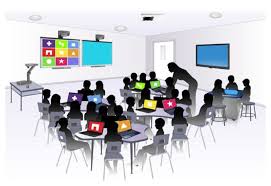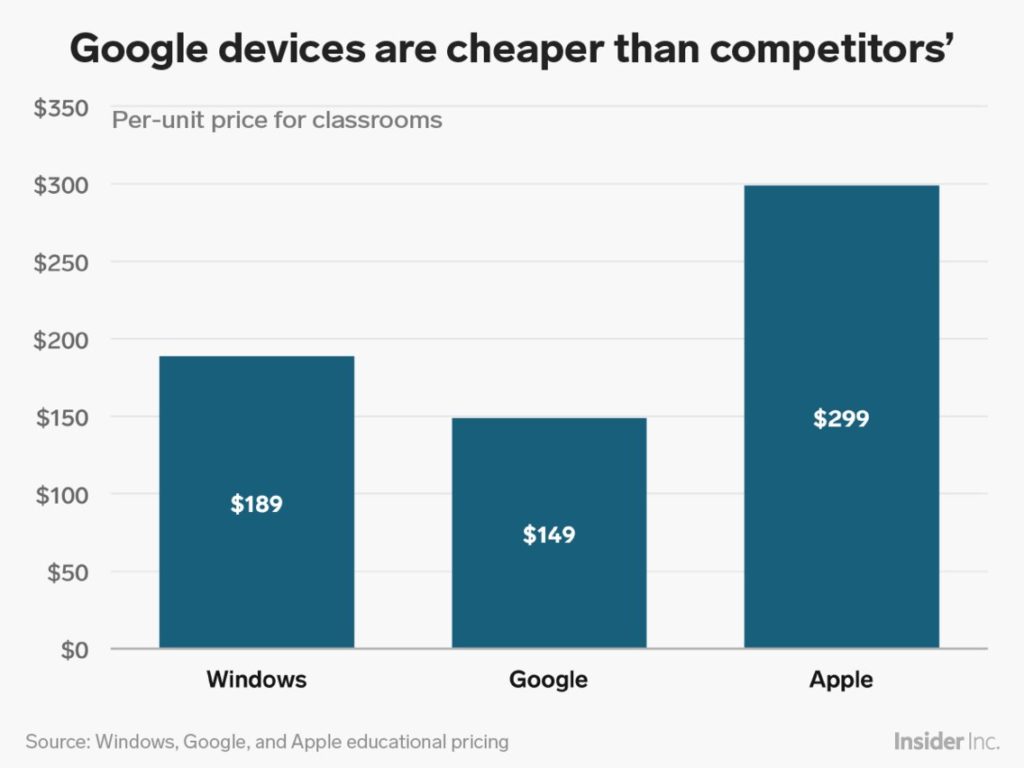
As we continue to move to a technology driven society, schools have been trying to implement more technological tools into their school’s curriculum to help strengthen the content that is being delivered to the students. This idea about 1 to 1 technology has seen a growing trend in our district to become a 1 to 1 but can all schools provide every student a laptop or tablet? We’ll see just how realistic this initiative is.
First off, 1 to 1 technology is defined as make sure every student has access to a computer or tablet to use during the course of the school year. At some schools they provide students with Apple iPads, others schools provide their students with Chromebooks, and then you have some schools that can’t afford either and students have share or use a computer lab when it becomes available. From varying districts you would see inconsistency among the schools regarding creating this 1 to 1 technology initiative. It is hard when you have a good portion of your schools are classified as Title 1 School.
Title 1 Schools
Schools that are receiving federal funds for Title 1 students, are schools with large concentrations of low-income students so they will receive supplemental funds to assist in meeting student’s educational goals. In the county I serve we have a high percentage of public schools that are classified as Title 1. Therefore, our students are coming to school with limited resources already. Therefore by offering this 1 to1 technology concept sounds great but can it be done for every student when a school may not have enough funds from Title 1 to cover the cost of such equipment and would then have to ask parents to contribute to this initiative in some sort of financial capacity for their student in order to have access to the technology. This would just be another financial burden to the parents that are trying to make ends meet already.
School Logistic of 1 to 1
How does a school such as mine accommodate for 2,500 students to have a computer or tablet that is classified as a Title 1 school? In Palm Beach County School District we piloted this technology program called Trailblazers which gave selected teachers in all subjects the opportunity to have a class set of Chromebooks in their classroom to help enhance their learning experience. Teachers that had these carts said their students really liked using the computer to do their work instead of pen and paper assignments. However, this pilot program was being funded by a tax levy in 2018 called the Penny Sales Tax Referendum which is how this program was funded. Then, the Principals were left to figure out how to get a Chromebook cart in every classroom? According to Rachel Premack, from Business Insider “Worldwide, there are 30 million Chromebooks in classrooms, the majority of which are in the US. Fifty-eight percent of the classroom laptops ordered in the US last year were Chromebooks. These laptops, which cost from $179 to $999 for typical customers, are manufactured by brands like Lenovo, Acer, and HP” (Premack, 2018). Thus, Google has made these Chromebooks more attractive to schools where Principals might have the funds in their internal budget to purchase more cart so more students can benefit.
If you look at the chart below you will see the average cost of a Chromebook to its other competitors. According to Business Insider, “As for the laptops, they’re deeply discounted. Institutional pricing for an iPad, once the standby education hardware nationwide, is $299 while Microsoft devices start at $189. Google said a single Chromebook starts at $149 per unit for classrooms” (Premack, 2018). Therefore Principals are able to purchase more but the Chromebooks do have limitation on educational software applications that can run on these devices so schools have to prioritize what is most important to their school being able to reaching the masses or more software capabilities but know they can’t purchase as many devices because they are more expensive.

This concept of 1 to 1 technology is good but one has to be realistic as to the financial cost in which this districts and schools will have to shell out in order to make this happen. Currently, the State of Florida educational budget is not large enough for public education to take on this kind of initiative because it would cost millions of dollars of additional money to implement. Therefore, districts and schools must do a cost benefit analysis to see if this would be in the best interest of the communities to use these financial resources to fund such a massive project when funding is so tight already. It’s a nice concept but is it really realistic to expect all schools to be able to do this, I think not unfortunately.
References:
Premack, R. (2018, November 11). Teachers love Google’s education products but are suspicious. Why is a megacorporation giving them a perfect tool for free? Retrieved July 13, 2019, from https://www.businessinsider.com/google-classroom-free-ed-tech-teacher-reaction-2018-11